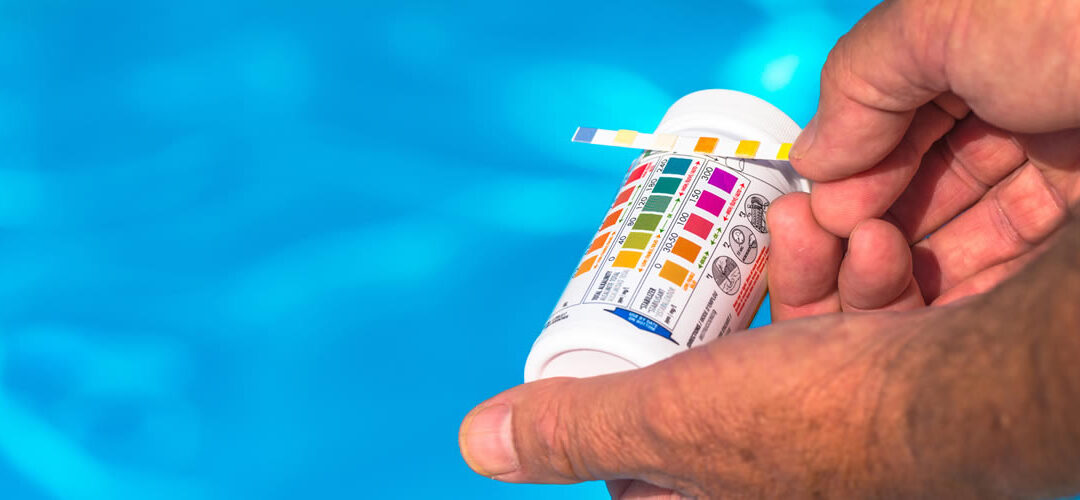A crystal clear and welcoming pool is crucial for enjoying these scorching summer days. Regular pool upkeep is necessary to maintain your pool in top-notch condition, and one of the most effective ways to achieve that is through appropriately balanced water. Keep reading to discover more about the significance of frequently examining your pool water and utilizing the correct chemicals to ensure proper balance.
Why is it Vital to Regularly Test Your Pool Water?
Pool water undergoes constant changes due to various factors like weather conditions, number of swimmers, and the usage of pool chemicals. By regularly testing your pool water, you can comprehend its current state, allowing you to make necessary adjustments to keep it clean and properly balanced, ensuring a safe and healthy swimming environment. Monitoring chlorine levels, pH, alkalinity, calcium hardness, and other significant factors contributing to water quality helps prevent issues such as algae growth, murky water, equipment damage, and potential health hazards for swimmers. Detecting these problems promptly enables you to address them immediately and avoid more serious complications in the future.
How to Accurately Test Your Pool Water and Understand the Results
Accurate testing of pool water enables you to balance it correctly, and this can be accomplished using pool test strips, pool testing kits, or electronic testing. Here’s a step-by-step guide on how to accurately test your pool water:
Step 1: Collect a water sample: Use a clean container to gather a water sample from a depth of at least the elbow. This ensures that the sample represents the overall water quality.
Step 2: Utilize a dependable testing kit: Invest in a high-quality pool water testing kit that includes test strips or liquid reagents. These kits typically measure chlorine, pH, alkalinity, and sometimes calcium hardness levels.
Step 3: Follow the instructions: Carefully adhere to the instructions provided with your testing kit to perform the necessary tests. This may involve dipping a test strip into the water or adding reagents to a sample.
Step 4: Wait for the results: Allow the test strip or reagent to react with the water as instructed. This typically takes a few minutes.
Step 5: Compare the results: Once the reaction is complete, compare the colors on the test strip or the numerical values obtained from the reagent to the reference chart provided with the testing kit.
Step 6: Take appropriate action: Based on the test results, take the necessary measures to adjust the water balance using suitable chemicals. We will discuss this further in the next section.
Adjusting Your Levels with the Correct Chemicals
Once you have tested your pool water and identified any imbalances, it’s time to correct the water balance using the appropriate chemicals. Here are some general guidelines:
Adjusting pH: pH adjusters, such as pH increasers (sodium carbonate) and pH reducers (sodium bisulfate), aid in maintaining the pool water’s pH level within the recommended range of 7.2 to 7.8. If the pH is too high, add a pH reducer according to the manufacturer’s instructions. If the pH is too low, add a pH increaser. Remember to retest after adjusting to ensure you have achieved the desired pH level.
Adjusting Alkalinity: Alkalinity balancers like sodium bicarbonate help stabilize the pool water’s alkalinity levels. Proper alkalinity prevents rapid pH fluctuations and ensures effective chlorine disinfection. To raise alkalinity levels, add an alkalinity increaser following the recommended dosage. If the alkalinity is too high, you can lower it by adding an acid-based pH reducer.
Adjusting Calcium Hardness: Calcium hardness adjusters, usually calcium chloride, help prevent water from becoming too soft or too hard. Proper calcium hardness levels protect pool surfaces and equipment. If calcium hardness levels are too low, add a calcium hardness increaser. If they are too high, dilution with fresh water may be necessary.
Maintaining Chlorine Levels: Chlorine is the most commonly used chemical for eradicating bacteria, viruses, and algae in pool water. It is available in various forms, such as chlorine tablets, granules, or liquid. Regularly monitor your chlorine levels and add the appropriate chlorine product to maintain a free chlorine level of 1-3 ppm for residential pools.
Using Algaecides: Algaecides are chemicals specially designed to prevent or eliminate algae growth in your pool. They work in conjunction with chlorine to purify your water and prevent unwanted algae blooms. Follow the manufacturer’s instructions when using algaecides. Regularly adding algaecides can help prevent algae growth and clarify your pool water.
The Pool Care Experts Serving Hempstead, Oyster Bay, Long Island, New York
Regularly testing your pool water and ensuring it is properly balanced is essential for maintaining a safe, clean, and inviting swimming environment. By comprehending the importance of pool chemistry, how to accurately test your pool water, and the appropriate chemicals to use, you can keep your pool in optimal condition and enjoy countless hours of summer fun. Visit Backyard Masters, our conveniently located pool supply store, to consult with our pool care experts. When it comes to the well-being of your pool, we’re here to assist you.


Recent Comments